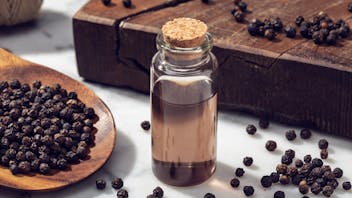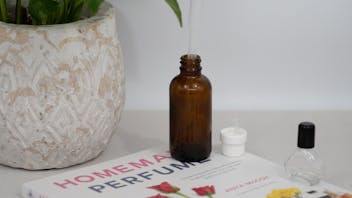Product Overview
Our organic Juniper Berry CO2 select extract has a radiant, lively, woody-fruity aroma with very green and somewhat sweet undertones – the Juniper oil favored in fine perfumery with its long dry down and fine tenacity. The supercritical carbon dioxide extraction process dissolves phenolic diterpenes, waxes, carotenoids, and other plant constituents, compounds that may not be present in the essential oil of Juniper Berry [1] resulting in an aromatic oil that more closely resembles the rich depth of character found in fresh, ripe Juniper Berries.
Juniper Berries are actually the small cones of this evergreen, shrub-like conifer tree that hails from the Cypress family. The aromatic properties of all parts of Juniper trees have been used traditionally for cleansing and incense by many cultures, from the ancient Romans and Medieval Europeans using in temples or strewn on floors,[2] to the Chinese and Native Americans burning in ceremony.
The properties of Juniper Berry has many benefits. The uplifting and centering Juniper Berry CO2 scent is excellent when diffused before meditation or added to air-refreshing room sprays, cleansing baths, saunas, or chest rubs. In invigorating massage oils, it lends qualities of clean freshness and warmth.[3] Its astringent properties make it ideal in skincare preparations for oily, dull, or congested skin, after-shaves, deodorants, leg lotions, and foot baths. Natural perfumers will enjoy the deeper, more complex richness of CO2 extracted Juniper Berry to bring woody-fruity warmth and balsamic freshness to their creations, especially with Labdanum, Frankincense or Sandalwood.
1 Bowles, E. Joy. The Chemistry of Aromatherapeutic Oils, 3rd ed., 2003, pp. 168-9.
2 Battaglia, Salvatore, The Complete Guide to Aromatherapy, 3rd ed., 2018, pp. 349-355.
3 Bowles, E. Joy. The Chemistry of Aromatherapeutic Oils, 3rd ed., 2003, pp. 168-9.



